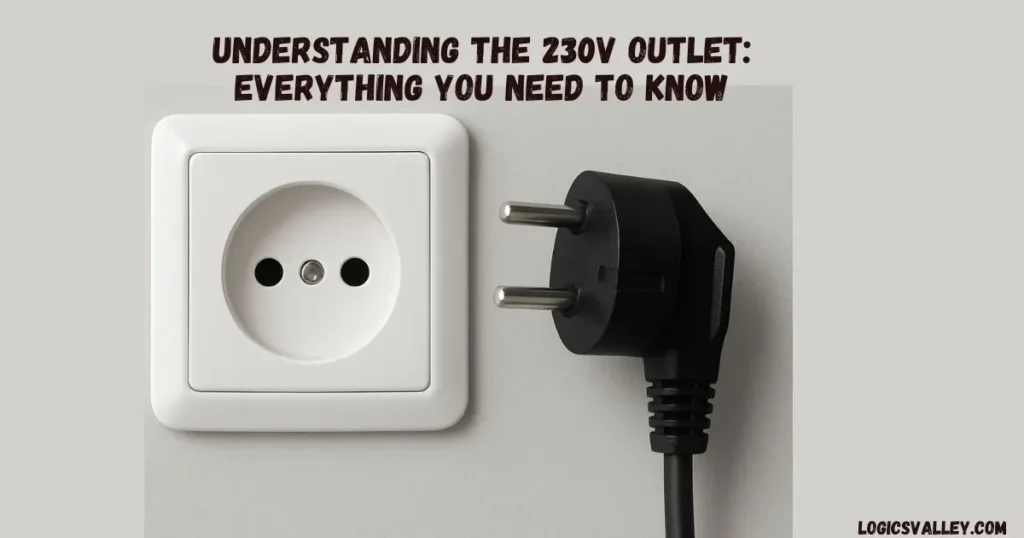A 230V outlet is a type of electrical socket designed to provide a voltage supply of 230 volts, commonly used in households and businesses across Europe, Asia, Africa, and parts of South America. Unlike the 120V outlet used in the United States and Canada, a 230V outlet delivers higher voltage, making it more efficient for powering heavy-duty appliances.
Typically, a 230V outlet is used for:
- Refrigerators
- Washing machines
- Air conditioners
- Ovens and stoves
- Industrial tools and machinery
By offering a higher voltage supply, these outlets reduce current flow, leading to less energy loss and more efficient performance
Why Do Some Countries Use 230V Instead of 120V?
The global variation in voltage standards has historical roots. Europe and most of the world adopted the 220–240V system, while North America stuck with 120V.
Key reasons behind using 230V include:
- Efficiency: Higher voltage means lower current is required, reducing energy loss.
- Cost Savings: Smaller wiring can be used without overheating, which lowers installation costs.
- Compatibility with Appliances: Most modern appliances in these regions are designed for 230V outlets, making them the standard.
How Does a 230V Outlet Look?
Unlike the standard two-prong plugs used in North America, 230V outlets often come with two or three round pins depending on the region. For example:
- Type C (Europlug): Two round pins, common in Europe.
- Type F (Schuko plug): Two round pins with grounding clips.
- Type G (UK plug): Three rectangular prongs with a fuse for added safety.
The socket design also varies based on local regulations, but all serve the same purpose — delivering 230 volts of electricity safely to the appliance.
Safety Considerations When Using 230V Outlets
Since 230 volts is almost double the voltage used in North America, safety precautions are critical. Here are some important tips:
- Grounding: Always ensure the outlet is properly grounded to prevent electric shocks.
- Circuit Breakers: Use outlets connected to circuit breakers or Residual Current Devices (RCDs) to protect against overloads.
- Professional Installation: Only certified electricians should install or repair 230V outlets.
- Avoid Overloading: Don’t connect too many high-power devices to a single socket.
- Check Compatibility: If traveling, confirm whether your appliances support 230V input to avoid damage.
The Benefits of 230V Outlets
- Energy Efficiency: Lower current reduces heat loss and wasted energy.
- Support for High-Power Devices: Large appliances such as ovens and air conditioners run smoothly.
- Durability: Wiring and electrical systems designed for 230V often last longer.
- Global Compatibility: Since most countries use 230V, appliances manufactured worldwide often support it.
Common Misconceptions About 230V Outlets
- “230V is more dangerous than 120V.”
– While the higher voltage poses a greater shock risk, both systems can be equally dangerous without proper safety measures. - “You can plug 120V appliances into 230V outlets.”
– This is incorrect and can permanently damage your device. Always check appliance ratings or use a voltage converter. - “All 230V outlets look the same.”
– In reality, plug types vary across regions. An adapter may be required when traveling.
Read More: About Qullnowisfap Products: The Future of Tech and Innovation
230V Outlets Around the World
| Region / Country | Standard Voltage | Common Plug Types | Notes / Usage Example |
|---|---|---|---|
| Europe (e.g., Germany, France) | 230V | Type C, E, F | Standard for households and heavy appliances |
| United Kingdom & Ireland | 230V | Type G | Includes fuse in plug for extra safety |
| Australia & New Zealand | 230V | Type I | Widely used for residential and commercial setups |
| Asia (India, Pakistan, China) | 220–240V | Type C, D, I | Appliances are manufactured specifically for higher voltage |
| Africa (Most Countries) | 230V | Type C, G, M | Mix of plug types depending on colonial influence |
| South America (Brazil, Chile, etc.) | 220–230V | Type C, N | Dual-voltage appliances are common due to variation |
- Europe: Standardized at 230V, with outlets such as Type C, E, and F.
- Asia: Countries like India, Pakistan, and China primarily use 220–240V outlets.
- Africa: Most countries follow the 230V standard.
- Australia & New Zealand: Use 230V with Type I outlets.
This global adoption shows why 230V is considered the universal standard for electricity, unlike 120V which is limited to North America and a few other regions.
Practical Tips for Homeowners
- Always hire a qualified electrician for new installations.
- Label your 230V outlets clearly if your home also has 120V sockets (common in some regions).
- Invest in surge protectors to safeguard sensitive electronics.
- If relocating internationally, check appliance compatibility and keep universal adapters handy.
Conclusion
Understanding the 230V outlet is crucial for both safety and efficiency in everyday life. From powering heavy-duty appliances to being the global standard in most regions, the 230V system offers undeniable advantages. While it carries a higher shock risk compared to 120V, proper installation, grounding, and usage make it safe and reliable.
For homeowners, electricians, and frequent travelers, knowing the basics of 230V outlets ensures not only convenience but also safety and long-term cost savings.


